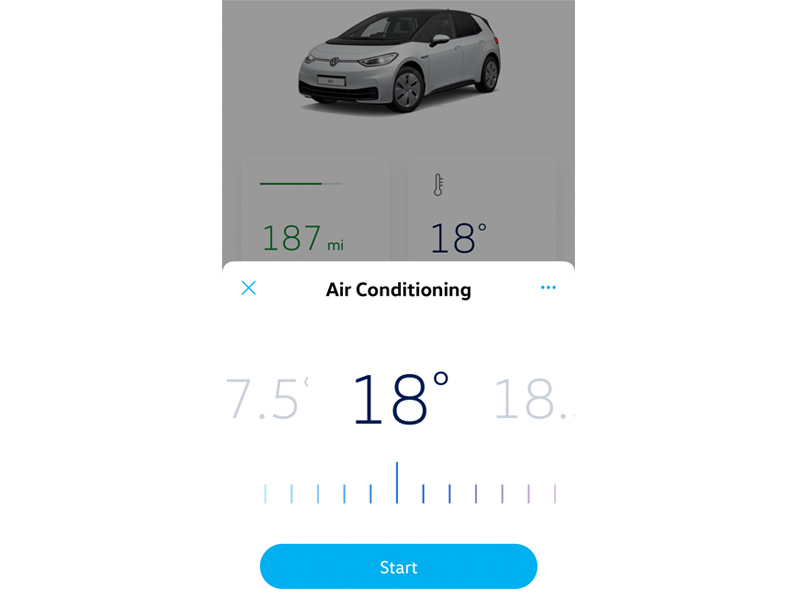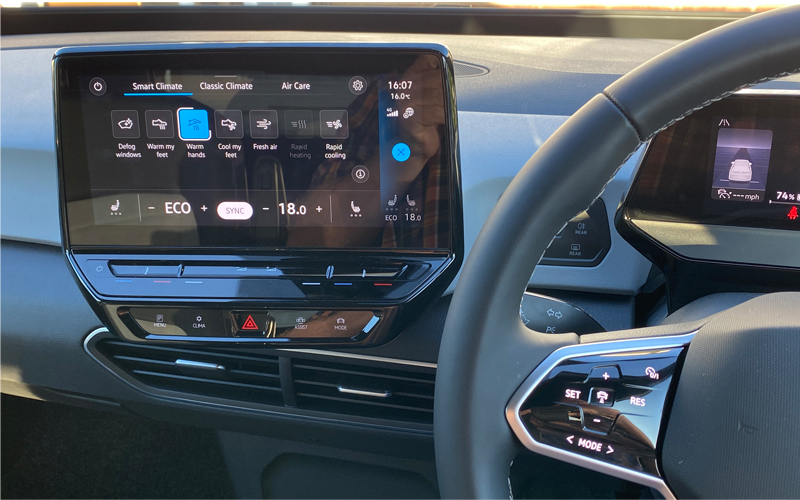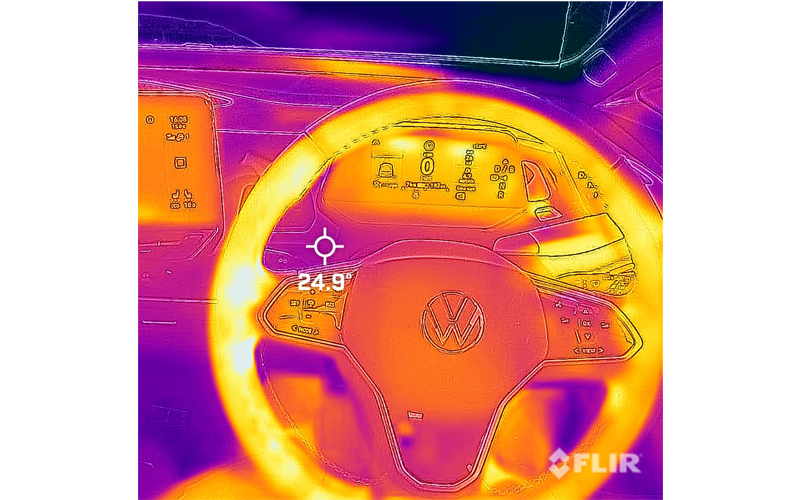
In the penultimate article in the series, Tom Denton explores the heating and cooling functions of an electric vehicle.
Most EVs allow the operation of heating or cooling when the vehicle is plugged in and charging. Some also allow this function directly from the battery. The most important aspect is that when plugged in, this allows the vehicle cabin to be ‘pre-conditioned’ on mains power, saving battery capacity and increasing range. The two most common operations are:
- Cooling with an electrically driven air conditioner compressor
- Heating with a high-voltage positive temperature coefficient (PTC) heater.

These cooling and heating functions are activated via the car’s infotainment system or a connected app. The car can be scheduled to heat or cool its interior to an optimum temperature ready for departure (Fig.1).
When the car is plugged in, electricity is drawn from the mains and not the battery, so this has no impact on driving range. Having the screen and windows free of mist and ice also saves time and is a safety improvement, because many people drive before the windows are clear.
Preconditioning doesn’t add miles to the normal range, but it will preserve the predicted range available at the start of the journey. Using the air conditioning or heating on a high setting is not needed during the journey, so the vehicle will consume less energy.

Preconditioning can also help the battery. Lithium-ion batteries are based on electro-chemical reactions that slow down in cold weather. During the winter, a battery provides less energy and will lose its charge more quickly. Preconditioning on some vehicles will warm the battery to optimum temperature using power from the mains, which will help the battery to work at its optimum. When necessary, the battery control unit can also request cooling of the battery.
Modern petrol engines, have a thermal efficiency under high load conditions of about 40 per cent and about 30 per cent under other conditions. The ICE engine is a ready source of waste heat that can be used in the vehicle cabin, but EV heaters have to use electricity. AC systems draw energy from both ICE and EV and will have some impact on the range. EV motors have an efficiency of around 95 per cent and other components such as the DC–DC converter, power electronics, and battery charging/discharging cycles all produce heat. Engineers are, therefore, looking at how to use this waste heat to warm EV passengers in cold conditions.

Another point of interest is that the vehicle cabin temperature is about perceived temperature as well as the measured temperature. New ideas such as electric feet heaters are under development. One already in use is the heated steering wheel. As well as being very nice for cold hands on a cold day, the driver ‘feels’ warmer so less energy is needed for general cabin heating. Cabin zones are often used too when the car just has one occupant.
In summary, preconditioning can improve the comfort of the driver and passengers, look after the high voltage battery, and save money.









